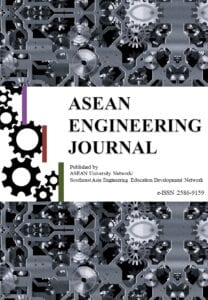SHEAR PERFORMANCE OF SPECIAL DRY JOINTS FOR PRECAST CONCRETE SEGMENTS
DOI:
https://doi.org/10.11113/aej.v11.16667Keywords:
Dry joint, Precast prestressed concrete, Shear behavior, Shear key, Steel fibersAbstract
The special dry joints for precast prestressed concrete segments are invented in this study to
overcome the limitation of conventional dry joints. Eight specimens of special dry joints were made
and subjected to direct shear test. Test parameters comprise concrete compressive strength (normal
and high strength concrete) and steel fiber volume added in the special dry joint (0%, 0.5%, and
1.0%). Test results revealed that the inclusion of steel fibers remarkably enhanced the shear capacity
and ductility index. Failure mode of specimens was changed from shearing off to concrete cracking
around shear key corners, defined as ductile shearing-off failure. Furthermore, the existing equations
for predicting shear capacity of keyed joints were validated by the experimental results. Among
available equations from literatures, the Turmo’s equation yields better prediction of the shear
capacity for the special dry joint made with normal strength concrete.
















